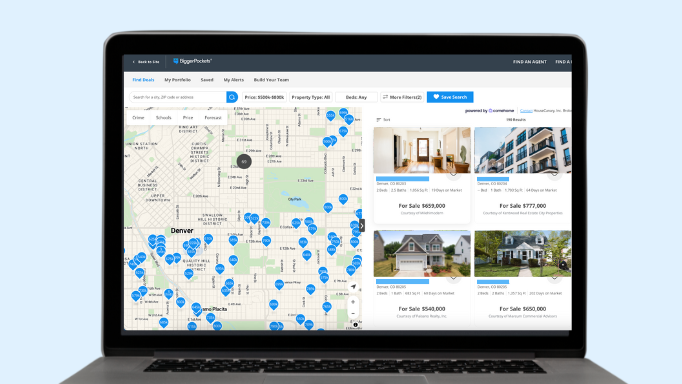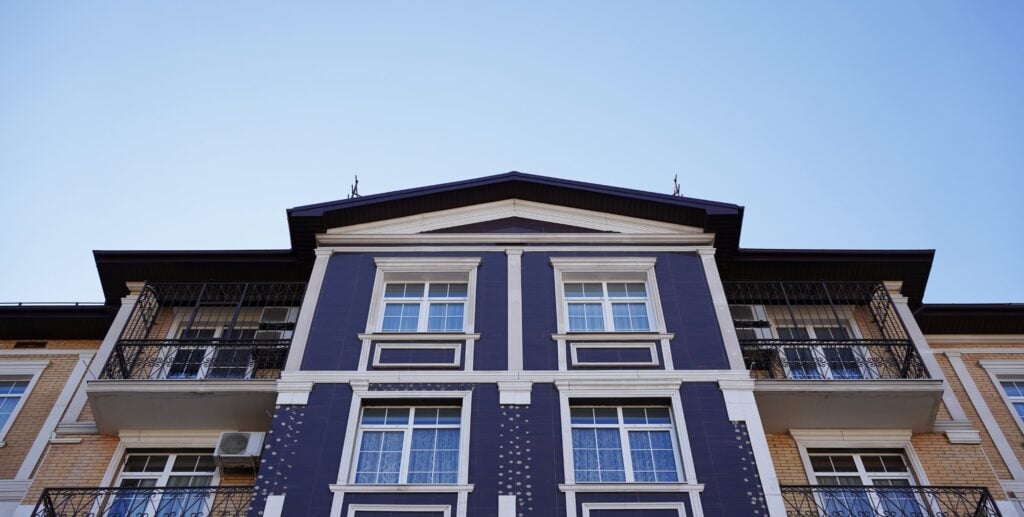Americans are becoming increasingly worried about housing costs, according to the Pew Research Center, with 69% of survey respondents reporting that they are “very concerned.” Nearly one-third of Americans were considered cost-burdened in 2023, meaning that they spent more than 30% of their household income on housing costs, and renters were especially strained. High mortgage rates, a dearth of new housing construction, demographic shifts, and urbanization all have a role to play in this issue.
Members of both political parties view housing affordability as a growing problem, and both presidential campaigns attempted to address the issue. While everyone seems to agree that the housing affordability crisis requires the attention of policymakers, the potential solutions are many and varied, and voters often disagree over the policies that should be prioritized.
There’s evidence that zoning reforms make an impact, but building codes remain an obstacle. About 60% of voters think rental property investors are a major contributor to rising home prices, but much of the evidence shows the effect has been minor.
Most voters support government funding for affordable housing but often disagree on how it should be spent. A recent Redfin survey showed that 82% of Americans support rent control despite overwhelming evidence that it decreases the supply and quality of rental housing and faces opposition from most economists and many housing organizations.
State and local ballot measures from this past election demonstrated voters’ concerns and highlighted their differences of opinion. Voters passed (and rejected) state and local ballot measures across the country that may impact real estate investors in some of the top markets.
Raising Funding for Affordable Housing
Several ballot initiatives presented to voters in the November 2024 election aimed to secure dedicated funding for programs that would improve housing affordability and reduce homelessness, including the following state and local measures.
Los Angeles tackles homelessness with sales tax
Los Angeles voters approved Measure A, which replaced a 2017 sales tax increase that funded anti-homelessness programs with an even larger and permanent sales tax increase designed to provide affordable housing and other services to the county’s homeless population. The measure, which added a 0.5% sales tax estimated to raise more than $1 billion annually, received support from nonprofit housing advocates like Habitat for Humanity of Greater Los Angeles and passed with 57% of votes from Los Angeles County residents.
In general, sales tax is regressive, meaning that it takes the greatest share of income from low-income workers, and some argued that Measure H, which previously imposed a 0.25% sales tax, had an insufficient impact on the county’s homelessness crisis.
Approving the increase was a tough decision for voters, particularly amid high inflation, but there were reasons to be optimistic—the new measure added funding for new housing construction in addition to shelters and services, as well as oversight to ensure appropriate spending. And since taking office in 2022, Los Angeles Mayor Karen Bass has taken steps to incentivize the development of affordable housing, allowing real estate developers to profit from building affordable units.
Voters in Rhode Island, North Carolina, and Baltimore approve bonds
Voters in three North Carolina cities approved bond projects that will provide a collective $125 million investment in affordable housing development:
- Charlotte: Voters passed the Charlotte Housing Bond Measure, which allowed the city to issue $100 million in bonds for low-to-moderate-income housing development, with nearly 64% voting yes. The bonds will be repaid through a property tax levy.
- Asheville: About 71% of voters supported the City of Asheville Housing Bonds Referendum, which will provide $20 million for investment in affordable housing development and down payment assistance for homebuyers.
- Chapel Hill: Voters authorized the city to borrow $15 million to fund the construction, preservation, and acquisition of affordable housing, with nearly 73% in support.
Voters in Baltimore overwhelmingly passed a $20 million housing bond measure. And in Rhode Island, voters also approved a $120 million bond to fund various initiatives to help low- and moderate-income Rhode Island residents afford homes, including community revitalization projects and housing-related infrastructure.
But voters in the wealthy city of Cary, North Carolina, voted against a $30 million housing bond referendum by a narrow margin. And Denver voters narrowly declined to pass a $100 million bond measure that would be repaid through a sales tax increase on nonessential purchases—the city has approved a number of sales tax measures in recent years.
Housing trust funds in New Orleans and Orlando
New Orleans voters passed a measure to establish a housing trust fund, requiring the city to devote 2% of its annual budget (about $17 million) toward building and rehabilitating affordable housing and helping first-time buyers achieve homeownership.
And in Orlando, Florida, voters approved a measure to make its housing trust fund permanent, allowing funding from multiple sources to support affordable housing construction and rehabilitation.
Conflicting Views About Rent Control
Basic economic theory holds that rent control and other government price controls aren’t viable solutions to high prices in a free market economy, and numerous studies analyzing the outcomes of rent control in cities confirm that rent control results in the deterioration of controlled housing units and/or disincentivizes new housing construction.
However, some studies show that rent control measures can reduce displacement and improve affordability for existing tenants, at least in the short term. That makes rent control an appealing public policy in a time of crisis.
Proponents of rent control argue that it’s possible to deter the negative impacts of rent control by closing certain “policy loopholes.” For example, USC researchers acknowledge that inferior maintenance is a concern in rent-controlled housing but note that enforcing strict housing codes may improve outcomes. However, they also cite the low quality of controlled housing units as a reason why some studies find that rent controls keep rents stable, even in uncontrolled units.
Essentially, a neighborhood in disrepair attracts only low-income residents, and thus it remains in disrepair. Whether this outcome is desirable is up for debate.
Some rent control advocates also point to robust new housing development in cities that have enacted rent control measures as evidence that rent control doesn’t hurt the housing supply, noting that other market factors have a greater impact on housing construction. One of those market factors is demand. Policymakers often suggest rent control in areas where high demand for housing results in skyrocketing rents. It’s not particularly surprising that cities with high demand are building more housing despite rent control measures that apply only to older buildings, and it isn’t evidence that the measure isn’t suppressing new construction.
Evidence from cities like St. Paul, Minnesota, which attempted to limit rent increases without an exemption for new buildings, showed a dramatic plunge in new housing permits. While Los Angeles may have built housing more rapidly than the rest of the county since 2000, it’s evident that new housing construction has been insufficient to meet demand, even with the new construction exemption to rent control laws.
The city still has a growing shortage of affordable housing units and a severe homelessness crisis. It’s difficult to determine the effect of city and state rent control measures on new housing construction in L.A. From a real estate investor’s perspective, the demand for apartments in Los Angeles may outweigh the eventual rent hike restrictions on a building. But from that same perspective, the policy does nothing to encourage investment at a time when the city desperately needs new housing.
Meanwhile, proponents of rent control acknowledge that the policy reduces property values and tax revenues, leaving less funding for affordable housing subsidies. Most rent control advocates also believe that rent stabilization measures should be moderate and flexible in order to benefit tenants. That may be why voters rejected both measures that provided state and local governments with too much control over rent prices and measures that would give landlords unlimited freedom in November elections.
California voters show opposition to rent control measures
Voters rejected California Proposition 33, a measure that would have repealed a state law limiting local government control over rent increases, with 62% opposed. Some YIMBY groups argued the measure would be counterintuitive, impacting cities’ ability to build sufficient housing, particularly in wealthy NIMBY communities that already resist affordable housing development. This marks the third failure of ballot initiatives intended to give municipalities in California the power to enact stricter rent stabilization ordinances.
California voters also opposed rent control in most local elections. While Berkeley voters approved Measure BB, which restricts rent increases to 5%, voters in Larkspur and San Anselmo rejected rent control measures, and voters in Fairfax repealed an existing rent stabilization ordinance.
Voters in Hoboken, New Jersey, declined to repeal rent control
Meanwhile, after a landslide vote in Hoboken, the city’s rent control measure will remain intact. The proposed referendum wouldn’t have touched the city’s rent cap for existing tenants, which is the lesser of 5% or the Consumer Price Index, but it would have impacted vacancy controls.
Under the current law, landlords can raise rents up to 25% when a tenant vacates, but no more than once every three years. The referendum would have removed the 25% limit for landlords who contributed $2,500 to the Hoboken Affordable Housing Trust Fund.
Hoboken is one of the most expensive cities in the country for renters, and it’s clear that voters weren’t prepared to provide landlords with unlimited freedom to set rent prices after a vacancy.
What Do Voters’ Positions Mean for Real Estate Investors?
The public may be catching on to the negative impacts of rent control. At least, there may be a growing understanding that rent control measures should be moderate so as not to deter new housing development. Real estate investors may owe a thank you to the YIMBY movement for increasing awareness that supply deficits are a key factor in high housing prices.
But, building enough housing to meet demand is a relatively long-term goal, and with many urban areas facing growing homelessness rates, voters seem divided regarding how best to meet immediate needs. Voters in some cities approved measures increasing taxes or allowing local governments to borrow money to fund new projects, but with narrow margins. Many residents understand that cities are facing a growing debt problem and are hesitant to kick the can down the road.
Overall, this is good news for real estate investors. It’s a sign that many people with concerns about housing affordability are focused on supply and eager to find creative solutions without strictly limiting rent increases or relying on regressive taxes or government debt. That may result in more attractive opportunities for real estate investors looking to get involved in affordable housing development.
Find the Hottest Deals of 2024!
Uncover prime deals in today’s market with the brand new Deal Finder created just for investors like you! Snag great deals FAST with custom buy boxes, comprehensive property insights, and property projections.

Note By BiggerPockets: These are opinions written by the author and do not necessarily represent the opinions of BiggerPockets.



